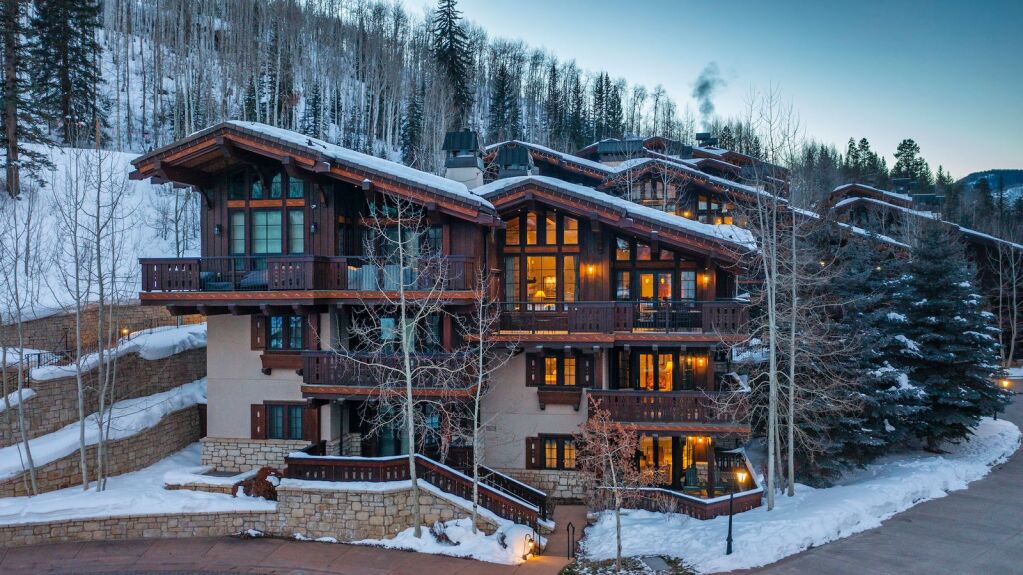Slifer Smith & Frampton Real Estate/courtesy photo
Eagle County’s real estate market has continued its remarkable run-up in the first two months of this year. That’s put still more pressure on potential first-time buyers.
The latest data from Land Title Guarantee Company shows Eagle County in February set a new record for the value of transactions in one month, with $347.5 million worth of property changing hands. The biggest single transaction was the $81.85 million sale of the Lake Creek Village apartments in Edwards. Removing that sale from the total results in $265.7 million in other sales volume. That’s about $20 million higher than January’s sales volume of $246.7 million.
The largest single residential sale was an $11.5 million sale of a property in Bachelor Gulch. In all, there were 11 February sales of $5 million or more.
At the other end of the market, there’s been a continued decline in the sale of homes priced at $500,000 or less. In term of units sold, that market segment was once the biggest piece of that particular pie. But February saw just 12 such sales, 12% of all sales. The new largest segment, homes priced between $500,000 and $1 million, saw 29 sales.
Matt Fitzgerald, Eagle County market president for Slifer Smith & Frampton Real Estate, acknowledged the dearth of lower-priced homes. Given the cost of construction and supplies, “It’s not a situation where product is going to come quickly,” Fitzgerald said, adding that there’s a deficit for housing across the country.
Not just home prices
In Eagle County, Fitzgerald noted there are some for-sale and some rental projects in the planning stages, but those are some years from completion.
Other factors are at work beyond the purchase price of homes. Mike Budd, a broker with Berkshire Hathaway HomeServices Colorado Properties and a member of the Vail Board of Realtors, said materials costs are going to keep rising, particularly those that use petroleum products. Those products make up a large part of home construction, from shingles to some window frames and plumbing supplies. Those have all been affected by increases in oil prices.
Budd said those aren’t the only increases homeowners face this year. Tax assessments will be released this year, and some of the valley’s price increases will be reflected in those statements.
Colorado property taxes are re-assessed every two years. The one coming in May will reflect values as of June, 2021. Budd noted that if a home’s value has risen since mid-2019, that rise will be reflected in higher tax bills. That doesn’t include any potential increases special districts ask voters for this year.
More costly borrowing
Those increases will also show up in new mortgages.
Chris Neuswanger, owner of Eagle One Financial, noted that mortgage interest rates have risen since the beginning of this year. A mortgage that carried a rate in the low 3% range in December is now in the mid-4% range, he said.
That doesn’t sound like much, but even that increase can be significant. A $600,000 mortgage in December would be $2,529 per month for principal and interest. A similar loan today at 4.5% would be $3,040 per month for just principal and interest.
That’s a 20% increase in the cost of a mortgage payment, Neuswanger said.
On the other hand, mortgage rates today are still very low compared to past decades. Neuswanger noted that mortgage rates in the 1980s and 1990s were commonly 7% or 8%.
Neuswanger has been in the business long enough to see a few of the valley’s boom-and-bust cycles. But this moment in history is different, he said.
The boom of the early 2000s saw many buyers qualifying for full-price mortgages with very loose standards. Many expensive homes were purchased with an eye toward quickly selling for a profit.
Buyers today are acquiring real estate with the intent to use those homes, Neuswanger said.
Many buyers today are coming up with down payments of at least 20%, Neuswanger added, and almost half of transactions today are cash deals.
“This is different than anything that’s happened before,” he said.
But, Fitzgerald said, the broader industry hasn’t yet felt the impact of rate increases.
“The biggest impact is inventory,” he said.
